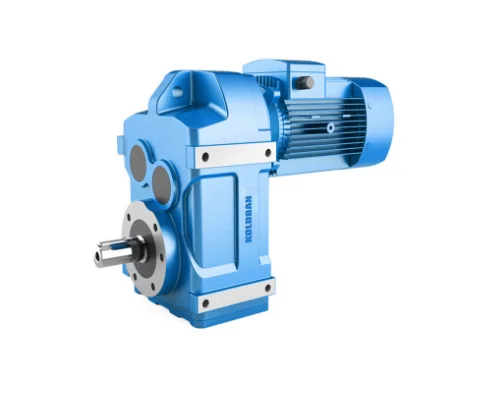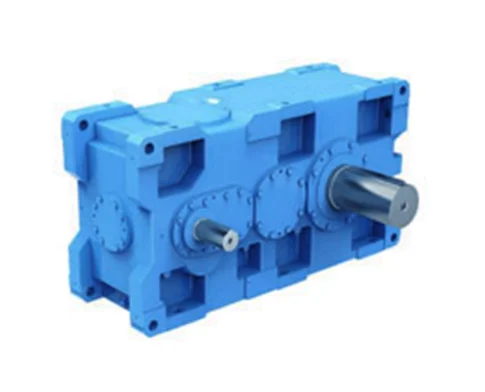Introduction
While the industrial landscape of today is undergoing rapid change, gearboxes and gear motors are often overlooked but perform a significant amount of heavy lifting. These integral elements serve a critical function in a multitude of machinery and systems, guaranteeing the seamless and effective functioning of numerous industries. By examining the technological advancements, practical applications, and real-world case studies of gear boxes and gear motors, this article explores their impact and innovation.
Gaining Knowledge of the Definition and Operation of Gearboxes and Gear Motors
The purpose of a gear box is to increase torque on a prime mover output shaft (such as a motor crankshaft) while decreasing its speed. The manipulation of gears of varying configurations and sizes within the enclosure accomplishes this adjustment in velocity and torque. When precise regulation of torque and speed is necessary, gear boxes play a critical role in mechanical systems.
A gear box and an electric motor are combined to form a single unit in gear motors. Systems necessitating high torque at low speeds feature a simplified design and enhanced efficiency due to this integration. As a compact and effective means of powering a variety of industrial machinery, gear motors are indispensable in automation.
Crucial Elements
The following are essential components shared by gear boxes and gear motors:
Different types of gears, including spur, helical, bevel, and worm gears, comprise the gear box‘s beating heart.
From the gears to the output, power is transmitted via the shafts.
Reduce friction and provide shaft support with bearings.
The internal components are encased and protected by the housing.
Progressions in Technology
Performance and longevity have been substantially enhanced as a result of recently developed gear box and gear motor technologies. The implementation of intelligent technologies for monitoring and maintenance, along with the utilization of high-strength materials and precise manufacturing methods, are all examples of progress. The numerous industries that have adopted gear boxes and gear motors as a result of their increased dependability and efficiency are now doing so.
G Series Industrial Gearbox Product Description
Constructed for rigorous industrial use, the G Series Industrial Gearbox is a multifunctional and resilient solution. A variety of ratios and output torque specifications are provided by the GP101GP124 and GR101GR124 models.
The GP101GP124 and GR101GR124 models.
1.25 450 ratio range for GP101 GP124
GR101~GR124: 5 ~ 400
2.990 KNm is the output torque of the GP101GP124.
6.19 hundred kilonewtons
Transport, mixing, slewing, hoisting, pumps, and other applications are all viable options.
Food, power, paper, cement, steel, chemicals, and the port are among the many industries.
Designed for a diverse array of industrial applications, the G Series gear box is constructed to deliver optimal performance and dependability despite challenging operational circumstances.

Motors of the HSBW Series
Helix, parallel shaft-helical, helical-bevel, and helical-worm geared motors are among the numerous varieties of geared motors comprised of the HSBW Series Gearmotors. Compact packages are the objective of these gear motors‘ high performance.
Classifications: H Series Helical Geared Motor, B Series Helical-Worm Geared Motor, S Series Parallel Shaft-Helical Geared Motor
S32S153: 3.77 — 31,434 B33B183: 5.36 — 32,625 W32W92: 6.8 — 33,818 Ratio Range: H12–H163: 1.39 — 27,001
The power (KW) of H12, H163, S32, S153, B33, B183, W32, and W92 ranges from 0.12 to 220.
1.4–23,200 NM for H12–H163; 3.5–18,000 NM for S32–S153; 10-62,800 NM for B33–B183; 11–4,200 NM for W32–W92
Transport, hoisting, mixing, packaging, pumps, and other applications.
Chemical, steel, power, port, cement, and tobacco industries, among others.
Offering a balance of power, efficiency, and dependability, HSBW Series gear motors are engineered to meet the varied requirements of industrial applications.

Transport Sector-by-Sector Industrial Applications Breakdown
For regulating the speed and torque of vehicles in the transportation industry, gear boxes are essential. They improve the overall performance and safety of the transportation systems by ensuring gentle acceleration and deceleration. Providing dependable and effective motion control, gear motors find application in a variety of transportation applications, including conveyors, vehicle lifts, and automated gates.
Producing goods
Gear motors play a significant role in manufacturing processes, which heavily rely on automation. They ensure high efficiency and precise control by propelling assembly lines, robotic arms, and other automated systems. Enhancing the overall productivity of manufacturing facilities, gear boxes are utilized in a variety of machines to optimize speed and torque.
In the Mine
To endure the severe conditions and enormous loads, mining operations require durable and dependable machinery. The high torque that is necessary for material transportation, crushing, and drilling is transmitted by means of gear boxes in mining equipment. Enhanced safety and productivity are the results of incorporating gear motors into automated material handling systems for mining.
Forces of Nature
Power distribution and generation within the energy sector necessitate the utilization of gear boxes and gear motors. Optimization of electrical power generation from natural resources is achieved through their implementation in wind turbines, hydroelectric plants, and other energy-producing systems. Ensuring a consistent energy supply necessitates the utmost reliability and efficiency of these components.
Efficiency and Benefits
Numerous advantages result from the combination of gear boxes and gear motors in industrial applications:
Energy losses are diminished and the overall efficiency of machinery is enhanced by the use of innovative designs and materials.
Precise engineering and long-lasting components guarantee heightened dependability, requiring only routine upkeep.
In order to minimize energy consumption and maintenance requirements, efficient gear boxes and gear motors reduce operational expenses.

Studies of Cases
Cement Industry Issue in Case Study 1
Owing to the abrasive characteristics of raw materials and the elevated temperatures associated with the manufacturing procedure, the cement sector encounters substantial obstacles in the form of heavy machinery degradation.
The Remedy
As an effective solution to these problems, the implementation of GP101GP124 gear boxes has been demonstrated. Pertaining to cement manufacturing, these gear boxes are optimal for demanding tasks due to their robust construction and high torque.
The Result
By decreasing maintenance expenses and downtime, the implementation of GP101–GP124 gear boxes has substantially extended the life of machinery. Cement plant operational efficiency and output have been significantly increased as a consequence of this enhancement.
Steel Production Issues in Case Study 2
The heavy loads and high temperatures that are inherent in the steel manufacturing process necessitate motor systems that are both precise and robust.
The Remedy
Steelmakers have obtained the requisite power and accuracy through the implementation of HSBW Series gear motors. Due to their optimal performance and high torque, these gear motors are well-suited for a wide range of steel manufacturing applications.
The Result
By increasing output velocity and precision with the aid of HSBW Series gear motors, steel producers are now capable of satisfying rising demands without compromising quality. Cost savings and decreased energy consumption have resulted from the enhanced efficiency.
Food processing issue in Case Study 3
In the food processing industry, where machinery must function dependably and securely, preserving efficiency and cleanliness is a primary concern.

The Remedy
In food processing equipment, these issues have been effectively resolved through the implementation of GR101–GR124 gear boxes. Ensuring the efficient operation of machinery while upholding hygiene standards, these gear boxes provide high torque and precise control.
The Result
Food processing plants have experienced enhanced productivity and safety as a result of the implementation of GR101–GR124 gear boxes, which have improved processing times and adherence to hygiene standards. Furthermore, maintenance and downtime have been diminished due to the dependable operation of these gear boxes.
Technology Advancement in Accordance with Trends
Positively predicting the future of gear boxes and gear motors are a number of emerging technologies that are ideally suited to propel further advancements in these fields. Emphasizing the convergence of Internet of Things (IoT) and artificial intelligence (AI) technologies in the realm of predictive maintenance is of critical importance. The technologies in question efficiently reduce unforeseen failures by facilitating real-time monitoring and analysis of the performance of gear boxes and gear motors and implementing preventative maintenance protocols.
Furthermore, there is a visible surge in the implementation of novel materials during the fabrication process of gear boxes and gear motors. The exceptional strength and durability provided by these materials are the reasons for the improved functionality and extended lifespan of the components in rigorous applications.
Venture Expansion
The anticipated trajectory of the gear box and gear motor industry in the coming years is substantial expansion, propelled by the expanding demand for streamlined operations and automation across diverse sectors. The growth of these components will be propelled by technological advancements and the expansion of their application domains.
Novel applications in developing industries, including electric vehicles and renewable energy, are anticipated to contribute to the expansion of the market. These sectors necessitate sophisticated gear boxes and gear motors to meet their distinct requirements, owing to progress in technology and expansion of the market.
In Essence
Contemporary industrial processes are profoundly dependent on gear boxes and gear motors as critical elements that drive advancements and streamline operations across various sectors. The presence of these components is crucial in guaranteeing reliable and effective functioning in industries including energy, transportation, manufacturing, and mining.
Technological advancements will progressively augment the effectiveness and reliability of gear boxes and gear motors, consequently engendering prospects for innovative applications and broadening the market. The future holds boundless potential for advancements and improvements in these essential components.

